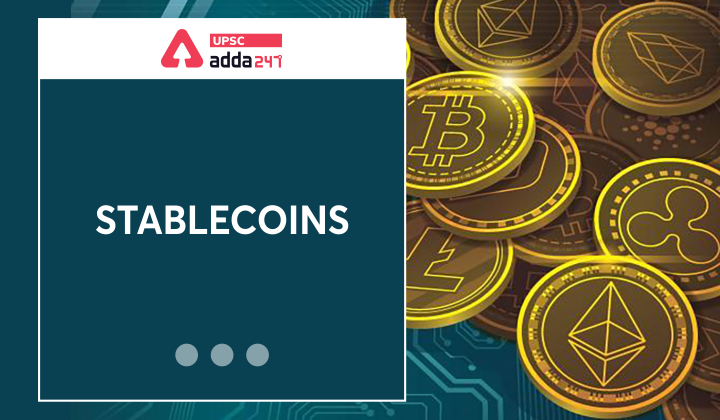Table of Contents
Relevance
- GS 3: Science and Technology- developments and their applications and effects in everyday life.
Context
- The Treasury Department of US and other agencies are moving towards tighter regulation for a fast-growing cryptocurrency called stablecoins.
Key points
What are stablecoins?
- Stablecoins are cryptocurrencies without the volatility. They have the same characters as other cryptocurrencies.
- To promise holders that every $1 they put in will remain worth $1, stablecoins hold a bundle of assets in reserve, usually short-term securities such as cash, government debt or commercial paper.
- So, unlike Cryptocurrencies like Bitcoin, whose prices tend to vary a huge amount in a short span of time, value of stablecoins are steady, more like a traditional currency, like Indian Rupee or US Dollar.
- With stablecoins, a person can maximise his/her chances of protection from market fluctuations. So, stablecoins form a bridge between old-world money and new-world crypto.
- Tether is the third largest cryptocurrency by market value, and until now, the most famous stablecoin.
Patents (Amendment) Rules, 2021
Why the prices of stablecoins are stable?
- There are two types of stablecoins depending on the collateral: national currency backed, and cryptocurrency backed.
- Collateralised stablecoins are attached to another asset, like the US dollar. Their issuers back up the value of their coin by holding on to that asset.
- Some stablecoins also employ algorithms to manage supply and demand of the coin so that circulation matches reserves.
Why to use stablecoins when US dollar serves the purpose?
- While trading cryptos for dollars, there are longer processing lags for dollar withdrawals, on some exchanges.
- Additional fees are also often imposed when dollar withdrawals are frequent or large.
- Stablecoins are used across a greater cross-section of crypto exchanges unlike, traditional currencies like USD.
Can stablecoins replace US Dollar?
- Stablecoins turnover has boomed since 2019, rising from a few bn dollars a day to an average of US$100 bn in April 2021.
- Big companies like PayPal and Visa have recently announced that they would allow payments with stablecoins.
- International money transfers in stablecoins involves less friction than via a bank.
- The settlement time is also faster and it is 24/7 available.
- To replace dollar with stablecoins, however, will require some kind of regulation.
- First of all, it is important to ensure that the issuer actually has the assets to back up its coins can be a start.
- The way stablecoins are growing, its regulation has become more important than ever.




 TSPSC Group 1 Question Paper 2024, Downl...
TSPSC Group 1 Question Paper 2024, Downl...
 TSPSC Group 1 Answer key 2024 Out, Downl...
TSPSC Group 1 Answer key 2024 Out, Downl...
 UPSC Prelims 2024 Question Paper, Downlo...
UPSC Prelims 2024 Question Paper, Downlo...





